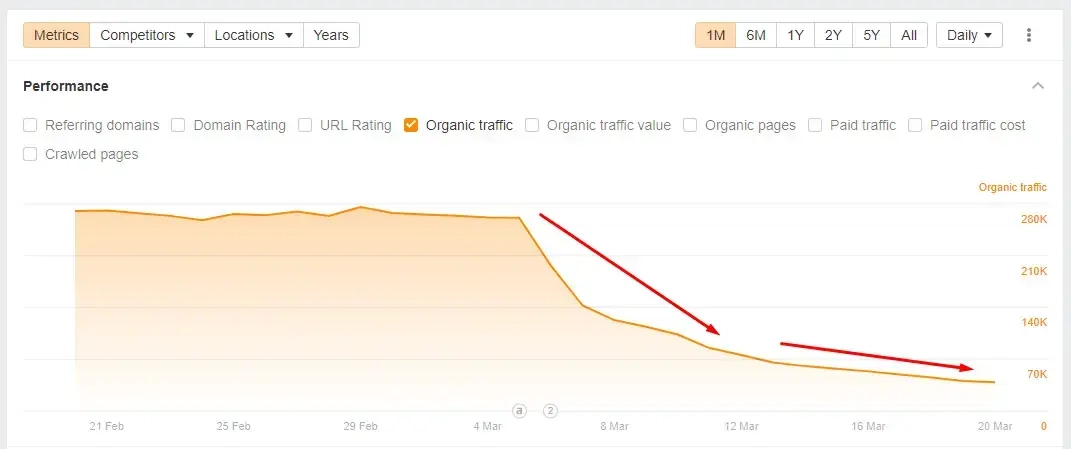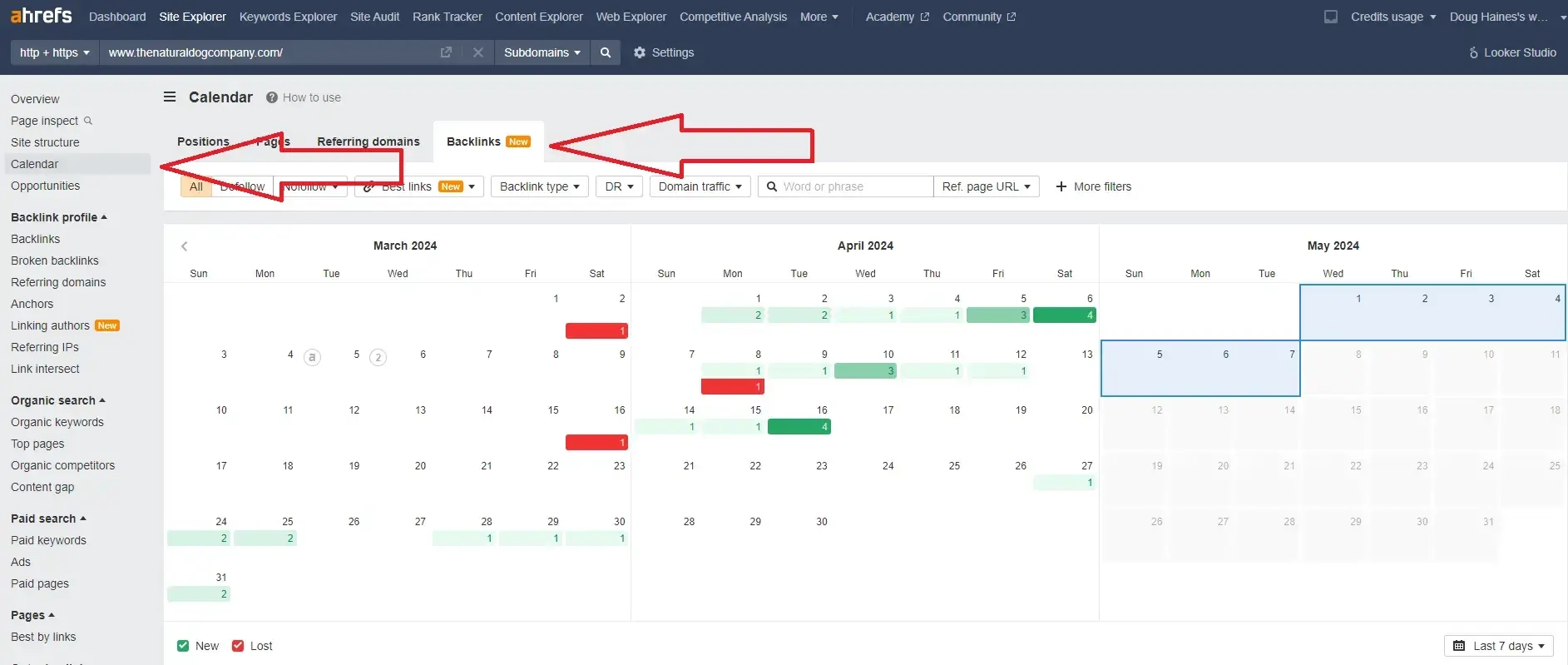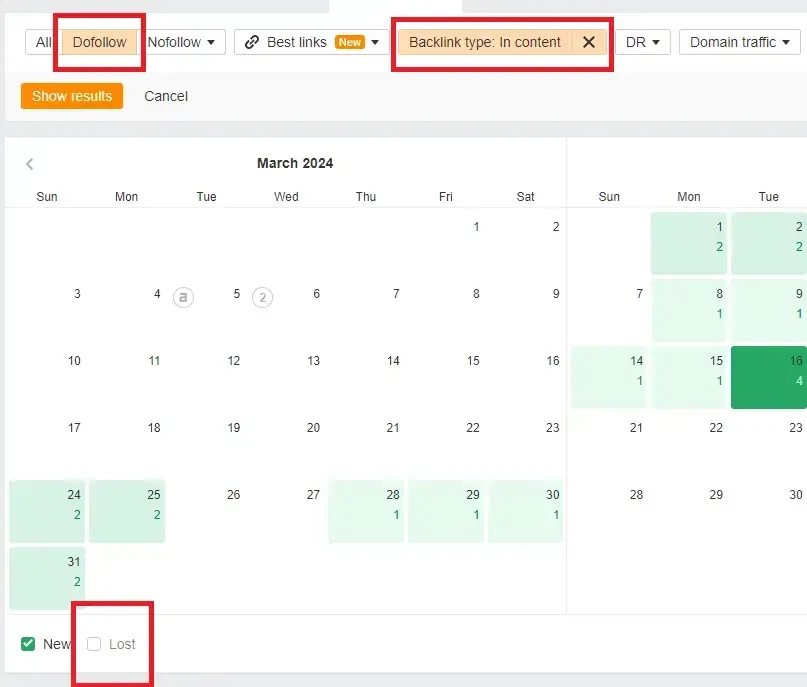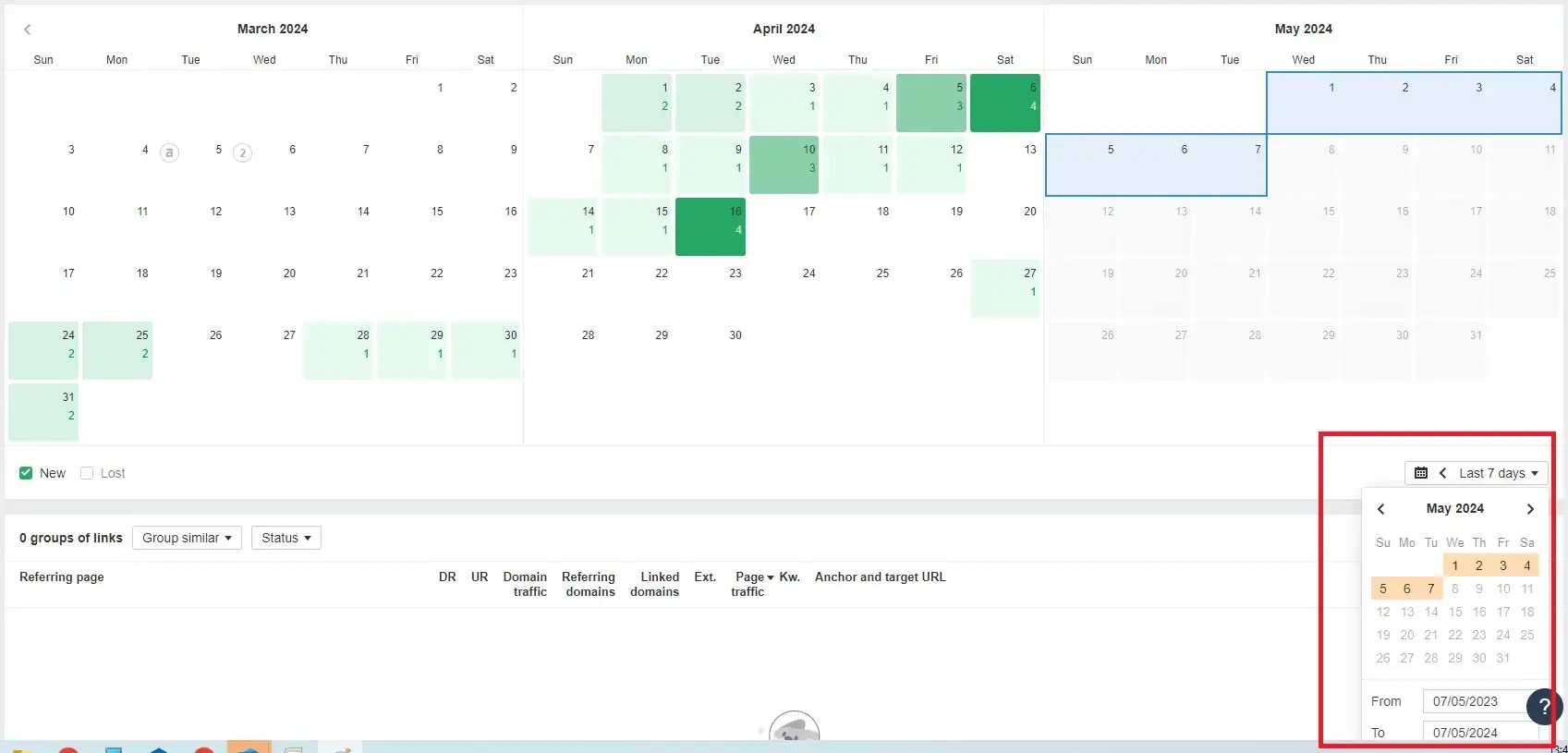
Link Velocity: How To Accelerate Your Website’s Performance
Clients often come to us wanting to ramp up their backlinks quickly—after all, everyone wants to get ahead in search results. But how fast you get those links matters.
The speed of link acquisition, known as your "link velocity," has the power to drive your website higher up in the search engine results pages (SERPs), but can also trigger search engine penalties if it’s not managed properly.
Either of these results is possible because search engines like Google use link velocity to determine whether your links are natural.
If your link growth is unnaturally fast, it can raise a red flag. But if it’s too slow, you might miss opportunities to overtake your competitors in the SERPs.
To achieve optimal link velocity, you’ll need to consider both of these factors to ensure you’re building links at a consistent speed—while making sure that you’re building website links faster than your competitors.
In this article, we explore how to determine the optimal level of link velocity for your website, the implications of getting it wrong, and practical ways to manage your link growth to better position your website in the results pages of search engines like Google.
Understanding Link Velocity
When people discuss link velocity, they refer to the rate at which your website gains new links over time.
You can track this by comparing the number of new links at different intervals or by figuring out the average number of new links your site picks up over a certain period.
For example, you might want to know how many links you get:
Over a month.
In a quarter.
As a result of a link-building campaign.
The link velocity formula involves dividing the number of new backlinks your site received by the time period during which they were acquired:
Link Velocity = (Number of new backlinks) / (Time period)
Let's say your website received 100 new backlinks over the course of a month. To calculate the link velocity for this month, you would use the formula:
Link Velocity = (100 new backlinks) / (1 month) = 100 backlinks/month
Essentially, link velocity refers to how quickly backlinks accumulate on your site.
Monitoring your link velocity trends—whether your backlink growth is increasing, stable, or declining over time—can provide critical insights into how your SEO strategy aligns with market dynamics.
Why Does Link Velocity Matter?
When a website links to your page, it signals to search engines that your content is valuable and credible, which can boost your ranking in the SERPs.
But it’s not all about quantity—the quality of your backlinks is just as important.
High-quality backlinks from websites with a high domain rating (DR) have a greater impact on your SEO efforts than numerous low-quality links.
Although the speed at which you build links might not be talked about as much as the quantity and quality of your links, it does affect your SEO.
Here’s why your link velocity is worth paying attention to:
✅ It indicates your website’s credibility: Link velocity reflects how quickly your website is gaining recognition in your industry. A consistent or increasing link velocity suggests that other sites find your content valuable enough to link to.
✅ It can boost your ranking: A positive link velocity can improve your site's search engine ranking by showing search engines that it is recognized by other reputable sites. However, an unnatural spike in link velocity can also raise flags.
✅ It keeps you competitive: Maintaining a higher link velocity than your competitors can mean the difference between outpacing them in search rankings or lagging behind. Optimizing your link velocity ensures you exceed your industry’s standard for backlink acquisition.
✅ It supports long-term success: Striking the right balance in link velocity—while also focusing on the quantity and quality of your links—ensures that your SEO strategy supports long-term growth.
However, avoid these two primary pitfalls when you’re implementing your link velocity strategy:
⚠️ You build links too fast
Google wants site owners to attract links naturally, which ideally comes from producing excellent content that organically attracts backlinks.
Acquiring unnatural links (for example, buying them in bulk from low-quality sites) is a violation of Google’s guidelines—so it’s key that your backlink profile looks natural.
Imagine a brand new website suddenly gaining 5,000 backlinks within its first month. Google’s algorithms, which are designed to spot unnatural link patterns, will quickly detect this and potentially trigger a penalty.
So, higher link velocity isn’t always better. Instead, the goal is to maintain steady, plausible link growth.
From my point of view if you’re jumping in with a question like this and you’re saying, “I’m going to get 200 backlinks in two days,” then that sounds a lot like you’re not getting natural backlinks.
That sounds a lot like you’re going off and just buying them or having someone buy them for you… And that itself would be kind of the thing that we would not be happy with.”
⚠️ You’re building links too slowly
On the flip side, link velocity that's too slow might mean your site isn't maximizing its potential to climb search rankings quickly.
For example, say your website is ranking fifth in Google’s search results. How do you beat the top four search results to appear first in the search results?
You need to create better content and build more links than your competitors!
If you aren’t building links fast enough, you’ll struggle to overtake your competitors in the SERPs.
An effective link-building strategy involves gaining backlinks at a steady pace that mirrors or slightly exceeds industry norms. This ensures that your website remains competitive and visible in search engine results.
Why Are Some Website Owners Concerned About Link Velocity?
Link velocity itself isn't directly monitored by Google. However, it is a key indicator of whether the backlinks you have acquired are natural.
Sharp increases or irregular bursts in backlink acquisition can serve as red flags in that they suggest a potential manipulation of search results.
The consequences of this can include penalties or actions that negatively impact a site’s ranking in search results.
Here’s an example of a website’s traffic after it was hit with manual action from Google:

The graph above shows a clear and significant drop in organic traffic to a website. Initially, the website had a stable traffic level with around 280,000 visits per month.
In March, the site was penalized and it saw a sharp decline in traffic, a reduction of almost 75% from its peak.
Maintaining a healthy link velocity helps you avoid such penalties. A sudden spike in your link velocity trend may signal manipulative practices, which could lead to manual actions like the one above.
How to Grow without Getting Penalized
While Google penalizes websites with unnatural links, it won't penalize businesses for legitimately marketing its products or services.
For example, consider a new business entering the market with a product launch.
To prepare for their launch, they execute a comprehensive marketing strategy which may include:
Securing press coverage.
Partnering with influencers.
Targeted outreach campaigns.
As a result, the company’s link velocity might skyrocket in their first month of operations.
Despite the sudden influx of links, Google would recognize that this high link velocity is indicative of legitimate promotional efforts—not manipulative practices.
So although link velocity is centered around how many links your website gets within a specified period of time, search algorithms are sophisticated enough to differentiate between natural link velocity and spammy practices.
Having high link growth from day one isn’t necessarily spammy, but make sure to keep these golden rules in mind:
❌ Don’t build irrelevant links
Focus on acquiring quality backlinks from websites that are relevant to your industry, niche, or content.
This not only adds value to your website, but also signals to search engines that your content is credible and authoritative within its context.
❌ Avoid bulk buying links
Buying links is against Google's guidelines and can result in penalties.
Instead of purchasing backlinks in bulk, ensure you earn high-quality links through appealing content, outreach efforts, and relationship-building.
❌ Steer clear of link schemes
Avoid participating in link schemes such as link farms and private blog networks (PBNs).
Link scheme tactics are designed to make money by manipulating search rankings and can lead to penalties if detected by search engines.
❌ Avoid building an unnatural link profile
Variety is key when it comes to link building.
Aim to acquire different types of links, including editorial links, guest posts, social media links, and directory listings.
Diversifying your link profile makes it appear more natural to search engines and reduces the risk of penalties.
What Is a Good Link Velocity?
Determining a good link velocity for your website is not a one-size-fits-all approach.
Some businesses might consider 30 links per month to be a good link velocity, while others might see anything under 100 as low.
The best way to determine your link velocity is by looking at your competitors.
Doing a link velocity analysis helps you establish a benchmark for your industry. Once you’ve done this, you can ensure you build links faster than your competitors.
How to determine link velocity using Ahrefs
Here’s how to determine your competitors’ link velocity with Ahrefs, using the example of businesses that sell natural dog treats:
1. After typing in your competitor’s URL into Ahrefs, click the “Calendar” tab from the sidebar. Then choose the “Backlinks” tab in the horizontal menu.

2. You can now see how many backlinks the site has gained and lost each month.
3. You need to ensure you’re only looking at dofollow content links, so choose this option in the menu at the top. Uncheck “Lost” at the bottom so you’re only looking at new links.

4. Choose the range for the number of new backlinks you want to view using the calendar button in the bottom right corner. In this case, I’m going to look at links from the last three months.

5. In the example below, The Natural Dog Company received 45 new links in the last 3 months. That’s around 3.75 links per month.
6. Next, go through the same process for some competitors:
a. Campfire Treats had just 26 links in the same period, or 2.1 per month.
b. But Pawstruck had 74 new links—or 6.1 per month
7. Clearly, The Natural Dog Company has a better link velocity than Campfire Treats. However, it is going to have to double its efforts if it wants to outrank Pawstruck.
💡 Consider the number of referring domains
In the example above, The Natural Dog Company has around 200 referring domains, while Pawstruck has gained around 700 over the same period. This means even if The Natural Dog Company were to double its link velocity, it would still not manage to outperform Pawstruck.
Based on these insights The Natural Dog Company’s site owners may wish to boost their link-building efforts or reconsider their strategy.
Why You Should Build Different Types of Links Over Time
The way Google perceives your website has a significant impact on how effective the links you build are.
If you own a small artisan bakery, how likely is it that you’ll secure a feature in the New York Times? While it's a lofty goal, it's far more feasible to garner attention through local reviews and social media buzz when you’re first starting out.
Google recognizes these nuances, which is why it's important to diversify your link-building strategies as your website evolves.
Here are some strategies for the early and later stages of your link-building efforts:
⏰ Early stages
During the early stages, Google is still scrutinizing your site to determine its trustworthiness.
Links you build from websites at this point may be overlooked by Google, rendering them ineffective.
Most companies focus on setting up social profiles and directory listings during this stage. You may also want to start building links from other sources, such as:
Review websites.
Business directories.
Guest posts.
Influencers.
Building links from these sources helps you develop a varied link profile in the early stages. This is essential because it helps Google recognize that your business is trustworthy and that you’re actively generating interest in your products or services.
⏰ Later stages
As your website gains credibility and Google begins to trust it, links from external websites carry more weight.
During this phase, you can start to ramp up your link-building efforts and leverage more advanced techniques. At this point, you might want to include tactics such as:
More guest posting.
Broken link building.
Link insertions.
Remember, the effectiveness of each individual link diminishes as your link profile grows.
To maximize impact, focus on acquiring high-quality backlinks from higher authority sites and producing exceptional content that naturally attracts links.
💡 Link Building: Quality vs. Quantity
The quantity of links is not the sole determinant of success.
In the later stages, you should prioritize quality over quantity by investing extra effort in securing links from authoritative sources.
By making sure you keep your link-building strategy aligned with Google’s evolving needs and expectations, you can boost your website's credibility and ranking in search engines.
Optimize Your Link Velocity with Linkbuilder
As you navigate the complexities of link building, remember that finding the right balance is the key to your success.
If you build links too quickly, you risk triggering red flags with search engines. On the other hand, if your link growth is too slow, you may miss out on opportunities to outpace your competitors.
At Linkbuilder, we can help skyrocket your SEO performance by crafting a tailored link-building strategy with a link velocity that aligns with your goals and industry dynamics.
Ready to start seeing results? Get in touch with us.

